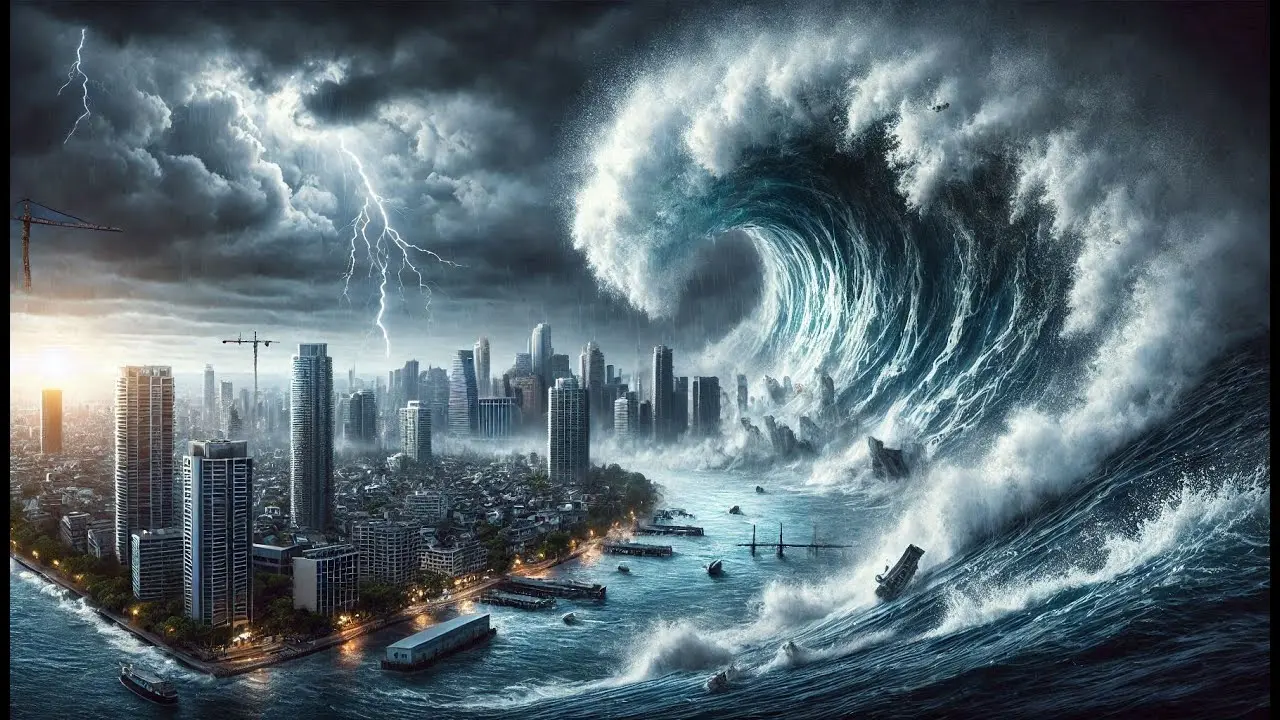
Intro: Knowing Mega Tsunamis and Their Effects
Tsunamis are large, devastating waves that can lay waste to entire coastal communities. Though the more common tsunamis are what people hear about usually, there exists a phenomenon much scarier—it is called the mega tsunami. These towering waves can grow hundreds of feet tall and bring destruction for miles upon miles. Unlike typical tsunamis, it takes extraordinarily rare and particularly cataclysmic events to unleash one of these monstrosities—events such as a volcano eruption, a massive underwater landslide, or even an asteroid impact.
The 1958 Lituya Bay, Alaska wave-tsunami-inducing landslide was among the most dramatic, producing waves with runups that reached as high as 1,700 feet. Mega tsunamis may be rare but where they have the potential for massive destruction damage, it becomes imperative for people to understand the risk if they are located in a high-risk area and to prepare adequately.
A mega tsunami is of low probability, though the risk involved is extremely high. The 2004 Indian Ocean tsunami was not a mega tsunami event; it simply pointed out how exposed we are to real significant natural hazards. In case of a mega tsunami happening there would probably be very little or no warning at all, giving very few hours for most coastal inhabitants to respond. Therefore, advance preparedness could mean the difference between life and death.
This guide explores those dangers and shares very practical tips about how to keep yourself and your loved ones safe should there be a mega tsunami.
What Causes a Mega Tsunami
Mega tsunamis are created from giant geological events that move large amounts of water. Common causes include:
- Volcanic Eruptions: Underwater volcanoes create big waves. Most people have in mind the image of lava dripping into water, but actually,
- Submarine Landslides: The displacement of water by massive submarine landslides can also generate mega tsunamis. This was the mechanism behind the 1958 Lituya Bay event.
- Asteroid Impacts: Though very unlikely, should an asteroid strike the ocean, it could displace enough water to create a mega tsunami.
Certain areas lie along the coast in greater proximity to tectonic plate boundaries or where there are active volcanoes. Some of the more at-risk regions include:
- Hawaii: Volcanic activity and its location on the Ring of Fire make it vulnerable.
- Alaska: Lies along the Pacific Ring of Fire.
- Pacific Northwest (USA and Canada): The Cascadia Subduction Zone offshore of Washington and Oregon is highly at risk.
- Indonesia: The Sunda Trench creates significant seismic activity, exposing coastal populations.
Prepare an Emergency Plan
A well-prepared emergency plan does make all the difference. In the event of a mega tsunami, it is time that matters. Here’s how to prepare:
- Identify Evacuation Routes: Know the way to get out fast. Have more than one way in case one is blocked.
- Set Meeting Points: Set up places for your family to meet if separated during evacuation.
- Communication Strategies: Plan for situations when cellular networks are down. Use text messaging and apps that don’t rely on data.
Put Together an Emergency Kit
A good emergency kit should have:
- Water – at least one gallon per person per day for three days
- Food – non-perishable canned goods, granola bars, dried fruit
- First aid kit – basic supplies plus any medicines needed
- Flashlights and batteries
- Portable chargers for devices
Home Safety Measures
- Reinforce the structure: Strengthen the foundation and walls to withstand flooding.
- Elevate electronics and appliances: Keep them high to avoid water damage.
- Install Early Warning Systems: Subscribe to tsunami alerts or get local warning systems.
What to Do During a Mega Tsunami
Evacuate Immediately
If a mega tsunami warning is issued, leave at once. Time should not be wasted. Go inland and find higher ground as fast as you can. Avoid bridges, overpasses, and flooded roads.
Stay Informed
Listen to updates from local authorities via radio, emergency apps, or tsunami alert systems. Even after waves die down, do not return home until it is declared safe by officials.
Assessing Damage
Start by looking for hazards like fallen power lines, gas leaks, and structural damages. Do not attempt repairs until professionals have checked the area.
Mental and Emotional Well-being
The mega tsunami can bring an emotional toll. Reach out to loved ones and get professional help if needed. Remember, trauma can be equally devastating as physical injuries; prioritize mental health.
Staying Updated on Tsunami Warnings and Alerts
Tsunami Warning Systems
Ensure you are enrolled in local emergency systems that include tsunami warnings. Many coastal areas send automatic notifications to give you time to evacuate.
Community Education and Regular Drills
Participate in tsunami drills and teach your neighbors evacuation routes. A well-prepared community increases everyone’s chances of survival.
A Final Thought on Mega Tsunami Preparedness
Mega tsunamis, though rare, can be incredibly devastating. Take precautions: plan an emergency, assemble a kit, fortify your home, and stay informed. Don’t wait until disaster strikes—prepare now and share this important information to help protect your community.
FAQs
-
What is the difference between a tsunami and a mega tsunami?
A tsunami is generally in waves to tens of feet. A mega tsunami can go into the hundreds or even thousands of feet, triggered by landslide, volcanic collapse, or asteroid impact.
-
Which regions are most at risk of a mega tsunami?
Areas near the tectonic plate boundaries or volcanoes such as Hawaii, Alaska, Indonesia, and the Pacific Northwest in both the United States and Canada.
-
What should an emergency kit include?
Water, food that will not spoil, first aid supplies, lights with extra batteries, small chargers you can carry with you, and any important medicines.
-
How can communities prepare for a mega tsunami?
They should practice leaving by routes nearby, use working warning systems, make the coast stronger, and build up lessons about escape paths and safety rules for all residents.




Leave a Reply